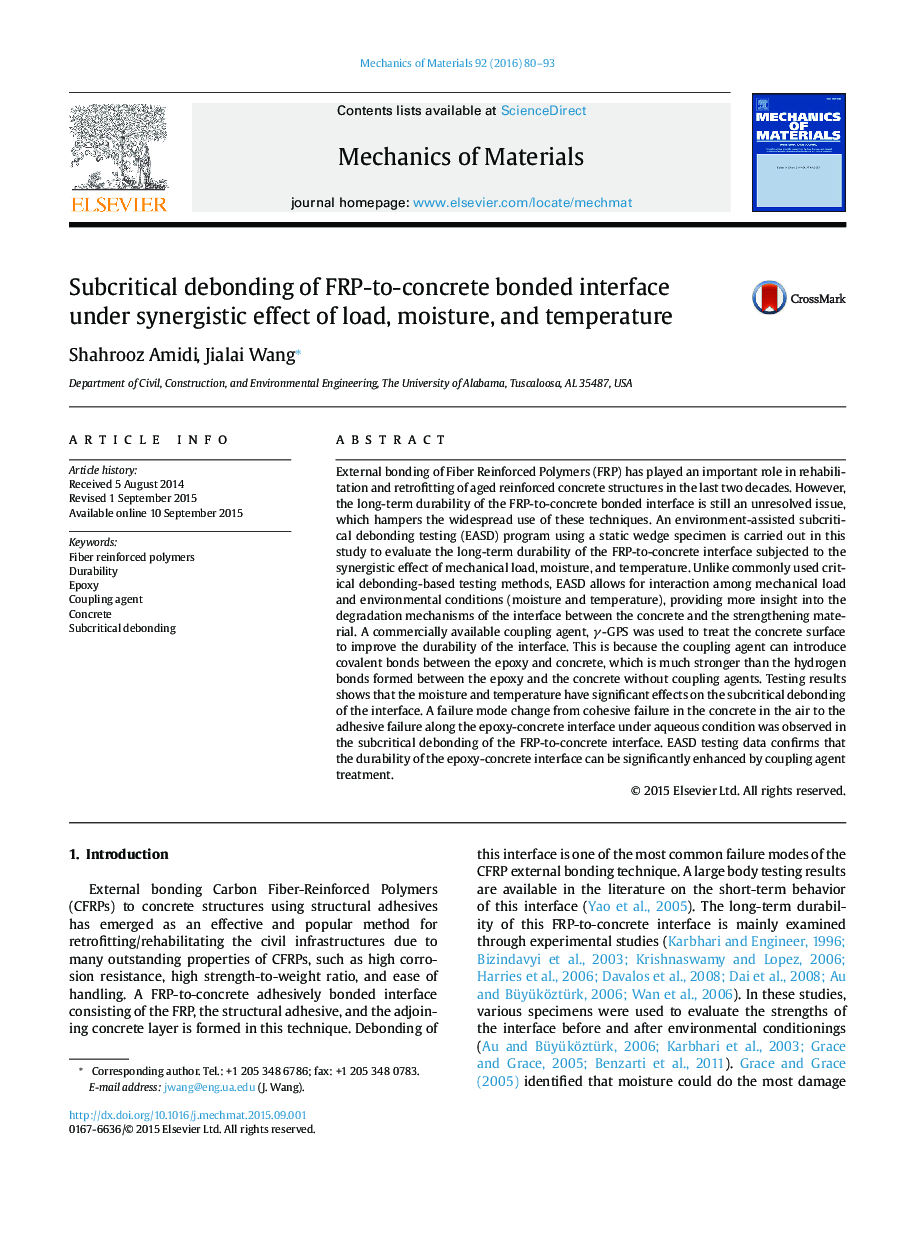| کد مقاله | کد نشریه | سال انتشار | مقاله انگلیسی | نسخه تمام متن |
|---|---|---|---|---|
| 797482 | 1467447 | 2016 | 14 صفحه PDF | دانلود رایگان |

• Subcritical debonding of FRP-to-concrete bonded interface was tested.
• Humidity and temperature can accelerate the subcritical debonding.
• Treatment with silane improves the durability of the epoxy-concrete interface.
• Subcritical debonding of the interface in water is different from in air.
External bonding of Fiber Reinforced Polymers (FRP) has played an important role in rehabilitation and retrofitting of aged reinforced concrete structures in the last two decades. However, the long-term durability of the FRP-to-concrete bonded interface is still an unresolved issue, which hampers the widespread use of these techniques. An environment-assisted subcritical debonding testing (EASD) program using a static wedge specimen is carried out in this study to evaluate the long-term durability of the FRP-to-concrete interface subjected to the synergistic effect of mechanical load, moisture, and temperature. Unlike commonly used critical debonding-based testing methods, EASD allows for interaction among mechanical load and environmental conditions (moisture and temperature), providing more insight into the degradation mechanisms of the interface between the concrete and the strengthening material. A commercially available coupling agent, γ-GPS was used to treat the concrete surface to improve the durability of the interface. This is because the coupling agent can introduce covalent bonds between the epoxy and concrete, which is much stronger than the hydrogen bonds formed between the epoxy and the concrete without coupling agents. Testing results shows that the moisture and temperature have significant effects on the subcritical debonding of the interface. A failure mode change from cohesive failure in the concrete in the air to the adhesive failure along the epoxy-concrete interface under aqueous condition was observed in the subcritical debonding of the FRP-to-concrete interface. EASD testing data confirms that the durability of the epoxy-concrete interface can be significantly enhanced by coupling agent treatment.
Journal: Mechanics of Materials - Volume 92, January 2016, Pages 80–93